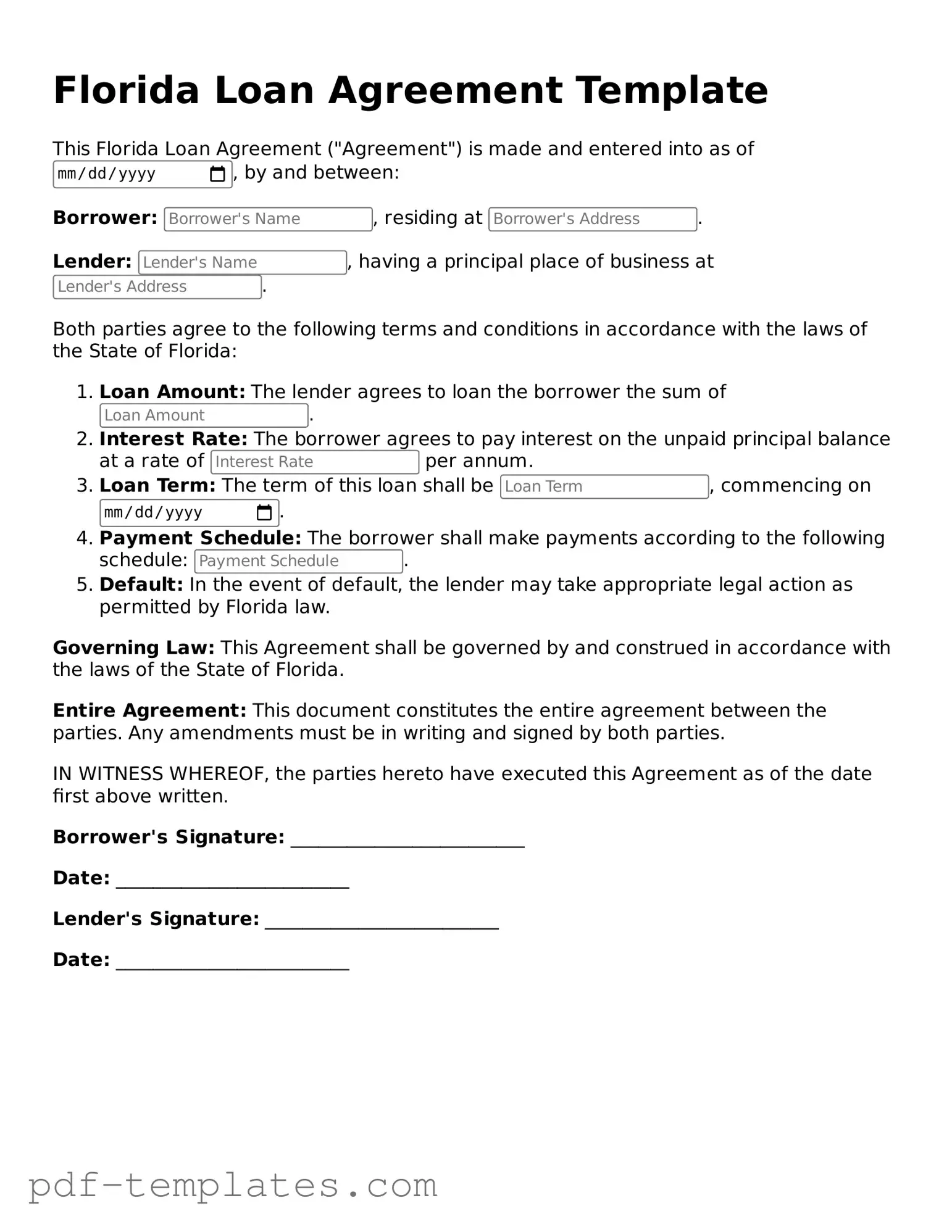The Florida Loan Agreement form shares similarities with a Promissory Note. Both documents outline the terms under which money is borrowed and specify the repayment obligations of the borrower. A Promissory Note is a more straightforward document that focuses on the borrower's promise to repay the loan amount, including interest rates and payment schedules. While the Loan Agreement may include additional terms such as collateral and conditions for default, the Promissory Note serves as a simpler acknowledgment of the debt itself.
Another document similar to the Florida Loan Agreement is the Mortgage Agreement. This document is used when a borrower secures a loan with real property as collateral. Like the Loan Agreement, the Mortgage Agreement details the terms of the loan, including the amount borrowed, interest rates, and repayment terms. However, the Mortgage Agreement also includes provisions regarding foreclosure and the lender's rights in case of default, making it more complex than a standard Loan Agreement.
The Florida Loan Agreement also resembles a Security Agreement. This document is utilized when a borrower pledges specific assets as collateral for a loan. Both the Loan Agreement and Security Agreement outline the terms of the loan, including repayment schedules and interest rates. However, the Security Agreement focuses on the collateral itself, detailing the rights of the lender to seize the pledged assets if the borrower defaults. This adds a layer of protection for the lender that is not typically found in a standard Loan Agreement.
For those looking to establish authority in decision-making, understanding the significance of a General Power of Attorney form is crucial. It empowers an individual to appoint an agent, allowing them to manage finances and make important choices when the principal cannot do so. To explore this form further, consider reviewing the comprehensive General Power of Attorney document available here.
Lastly, the Florida Loan Agreement is akin to a Line of Credit Agreement. This document allows borrowers to access funds up to a specified limit, rather than receiving a lump sum. Both agreements outline the terms of borrowing, including interest rates and repayment schedules. However, a Line of Credit Agreement typically provides more flexibility, allowing borrowers to withdraw and repay funds as needed, whereas a Loan Agreement usually involves fixed payments over a set period. This distinction highlights the different structures of borrowing arrangements available to consumers.
